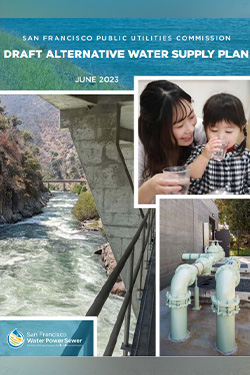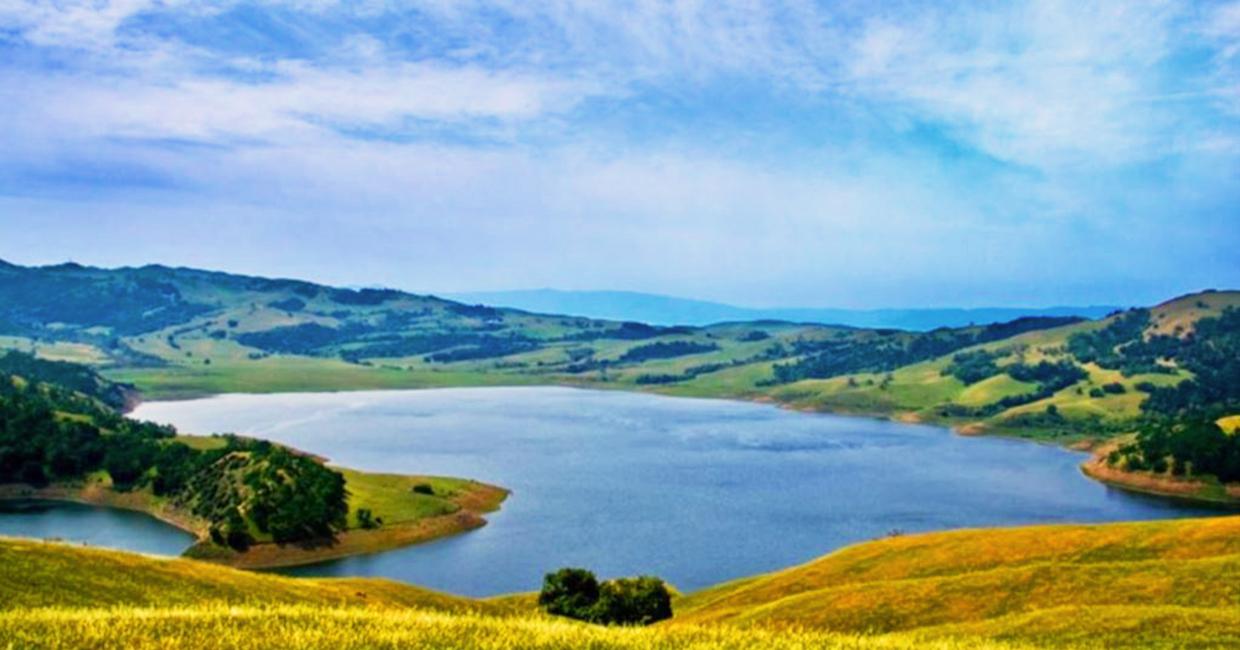The San Francisco Public Utilities Commission (SFPUC) recently released the Draft Alternative Water Supply Plan (Draft AWS Plan). In 2019, the agency established the Alternative Water Supply Program (AWS Program) to help prepare for uncertainties the SFPUC’s water supply may face in the future. With six regional alternative water supply projects currently being planned and evaluated, the AWS Program is proud to share this detailed guide to the agency’s water supply planning.
“The Alternative Water Supply Plan serves as a blueprint for how we’re thinking about our water supplies and how we’re preparing for future vulnerabilities. It not only outlines our projects but explains our reasoning for pursuing their continued planning,” said Manisha Kothari, the Alternative Water Supply Program Manager at the SFPUC.

The purpose of the Draft AWS Plan is to address a potential future water supply gap. The gap is calculated by measuring future water availability against the SFPUC’s water obligations and demands. There are several factors that may affect availability, obligations, and demands in the future, making this plan a crucial tool for the SFPUC’s long-term preparedness.
Evolving Water Supply Conditions
The first step in determining the water supply gap is to understand how much water the SFPUC predicts will be available in future years. Water availability is dependent on factors such as proposed regulations and climate change, which could result in a future water supply shortfall.
“Droughts have been more frequent in the last 20 years than in the preceding hundred years. In the face of uncertainties, we want to make sure we’re diversifying water supplies – both in terms of sources and geographic distribution – and preparing for the future,” Kothari explained.
The San Francisco Bay/Sacramento-San Joaquin Delta Estuary Water Control Plan Amendment, or the Bay-Delta Plan Amendment, was adopted by the State in 2018 and calls for large increases in water releases on the tributaries to the San Joaquin River, which is a major tributary to the Bay-Delta. Increases in water releases would leave less water available from the Tuolumne River to deliver to SFPUC customers. While the SFPUC is involved in ongoing negotiations with the State on a voluntary agreement for implementation of the Bay-Delta Plan Amendment, the Draft AWS Plan identifies ways to improve the agency’s reliability during future droughts, when the potential effect of the Bay-Delta Plan and climate change would be most pronounced.
Planning for Obligations, Building for Demand
An important consideration for addressing the water supply gap is how and when to invest in new supplies. While water projects can take decades to build, future uncertainties mean that both supply and demand continue to change. “We don’t want to overbuild, but we do want to have enough water when our customers project, they’ll need it. That’s why we’re taking the approach of planning for obligations, but building for demands,” Kothari said.
Demand projections account for projected conservation and other demand management actions, as well as local projects that take the pressure off surface water supplies from SFPUC watersheds. On the other hand, obligations measure how much the SFPUC could be responsible for delivering based on legal and contractual agreements, retail service area commitments, and potential future commitments to existing interruptible customers. “We can think of existing and potential future obligations as a ceiling for the maximum amount of water we may have to provide,” she explained. One uncertainty that could impact future obligations is the SFPUC’s decision whether to make the cities of Santa Clara and San Jose permanent customers.
The AWS Plan makes several recommendations related to future water supply planning. Some recommendations are project-specific, while others are programmatic areas of focus for the next phase of planning. These priority areas include addressing affordability and operational integration or ensuring that the SFPUC can efficiently integrate new sources of supply with the existing surface water system.
“Delivering the AWS Plan is an exciting milestone because it lays out our thinking on how to prepare for water supply uncertainty. It’s one piece of a bigger puzzle, but thoughtfully diversifying our water supply will help ensure we are working toward a sustainable water future for all our customers,” Kothari noted. The AWS Plan won’t be finalized until later this year and will be updated periodically in the future as planning parameters evolve.


